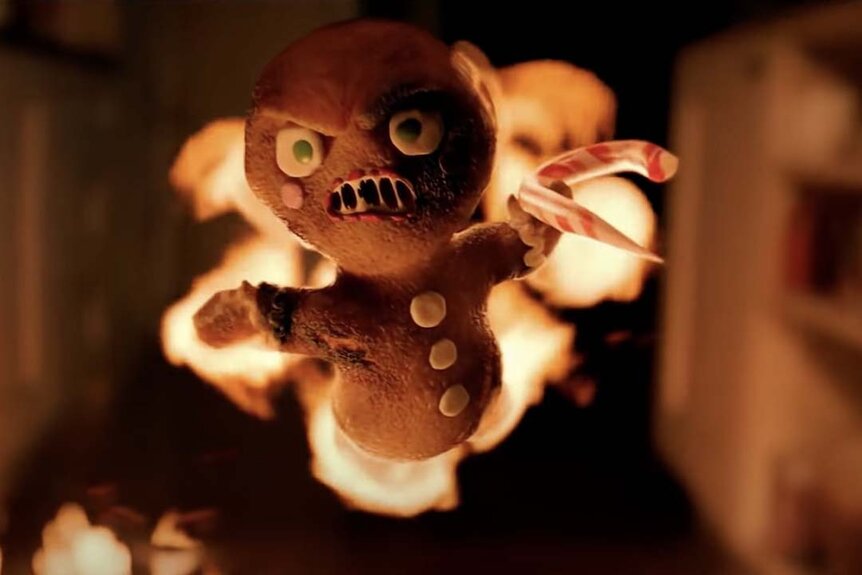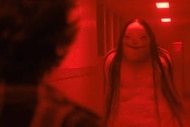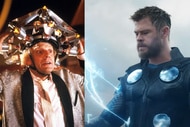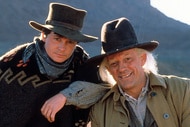Create a free profile to get unlimited access to exclusive videos, sweepstakes, and more!
The Krampus Legend: An Explainer
Let's take a look at the Krampus figure, created in folklore to be the antithesis of Santa Claus.
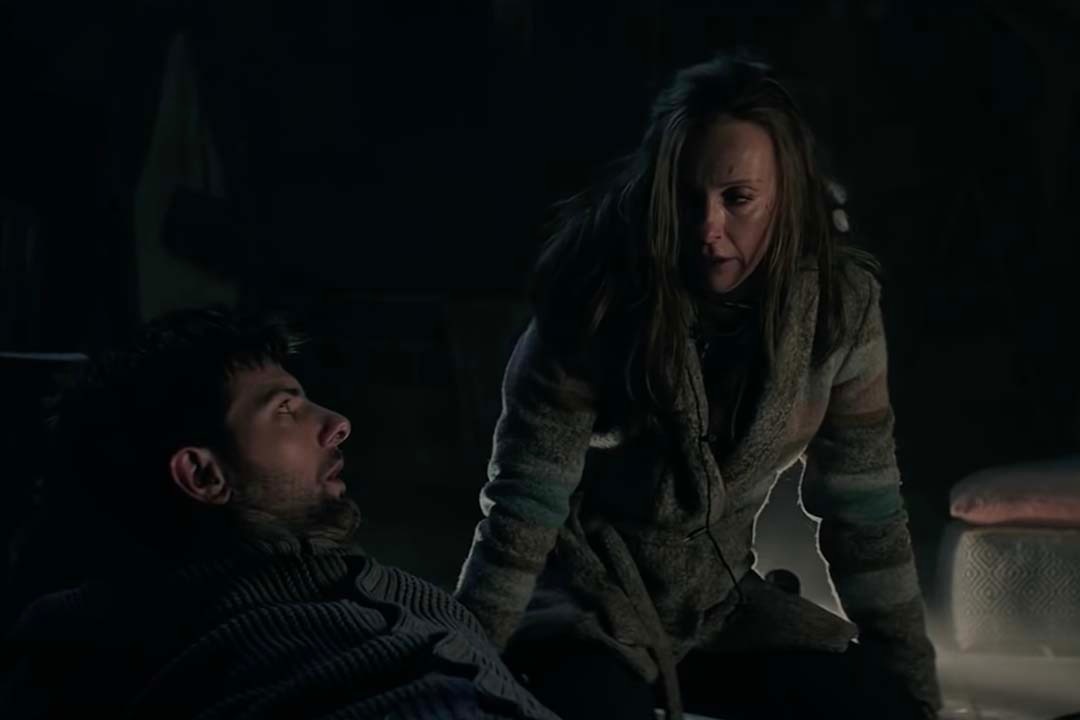
As the Halloween season folds back into the dark, there lingers one shadowy folklore figure that travels forward into the holiday season –– the Krampus.
At first a pagan figure of the winter solstice originating from Austrian folklore, the Krampus legend has traveled across the centuries into more mainstream European culture where he became the dark opposite of the light-filled St. Nicholas, or Santa Claus. The half-man, half-goat creature was created to be a potent cautionary tale for all the naughty children who disobeyed their parents throughout the year, a prank played by adults upon the impressionable young.
The Krampus' frightening lore has stood the test of time, originating in the 6th or 7th century in Austria or Germany, while surviving a Christian reworking. Now, Krampus even gets his own celebration day, December 5. And the last 100 years has seen the Krampus story and figure grow ever darker, with portrayals in movie's like Michael Dougherty's 2015 Krampus (now streaming on Peacock) and other presentations that have reshaped him into a horror movie beast worth running away from.
RELATED: The 6 best Christmas-Halloween crossovers to enjoy this holiday season
With the more cheerful holiday season imminent, SYFY WIRE is here to keep things a little scary by unpacking the real history of the Krampus.
The History of the Krampus
The pagan origins of Krampus haven't remained well-documented. It's known that the name comes from the German word krampen, which means claw. As time progressed and the story moved through more of Europe, the Krampus legend became intertwined with the Christian folklore of St. Nicholas. The creature's time to wander officially became December 5, known as Krampusnacht, which happens the day before the feast of St. Nicholas on December 6. Heading into the holiday season, parents used the legend of the creature as a way to make their children behave, threatening that "bad" children would only be given wooden switches, or even kidnapped, unless their behavior changed before St. Nicholas came around.
Up until modern times, Krampus wasn't even a consistent figure during the holiday seasons. In an interview with Live Science, Matthäus Rest, a social anthropologist at the Max Planck Institute for the Science of Human History in Germany, said, "In the mid-1800s, it was indeed practiced in only a handful of small regions in Bavaria, Tyrol and Salzburg." It was only in recent times that scholars and fiction writers became enamored with the figure and brought the concept and creature back into fashion. In 2004, designer Monte Beauchamp started releasing reprints of classic postcards featuring Krampus, which gave modern audiences a visual reference once again. The most repeated physical traits include fangs, large goat horns, and hooves.
Pop Culture's Take on the Krampus
North America has also embraced the Krampus lore. Over the last decade, many cities in the United States have created Krampuslauf events, or Krampus runs, that occur on December 5. Some runs are more family-oriented, celebrating the more witty side of the folklore. While some runs are decidedly more adult-centric and include dressing up as the creature in elaborate costumes and imbibing a lot of German ale.
The last decade has also ushered in a lot of print, television, and film imaginings of the Krampus legend that either flesh out the back story or contemporize the story for modern audiences. Aside from Beauchamp's series of books, in 2013, Image Comics released a Krampus series from writer Dean Kotz and artist Brian Joines. In 2015, writer Grant Morrison included the character in his Boom Studios series, Klaus. The anthology series Inside No. 9 featured the creature in the 2106 episode "The Devil of Christmas."
RELATED: Horror Starter Movies to Watch with Five Nights at Freddy's
On the film side, Krampus has been a star in many low-budget or direct-to-video titles, from Krampus: The Christmas Devil (2013) to Slay Belles (2018). But Krampus' biggest big screen splash came in director Michael Dougherty's modern take on the folktale, Krampus. Starring Adam Scott and Toni Collette, the film has become a comedy horror cult hit with those who like a more sinister take on the holiday season.
A box office success at the time, Dougherty recently told Collider that he's finally come up with a follow-up story for Krampus. "It doesn't necessarily center around a family as much as it might be about a group of strangers who are trapped somewhere," he noted. That would free Dougherty up to bring in a new cast, and allow him to expand upon his Krampus mythology and world-building started in the first film.
To see for yourself how the legend has evolved, watch director Michael Dougherty's Krampus, now streaming on Peacock!
